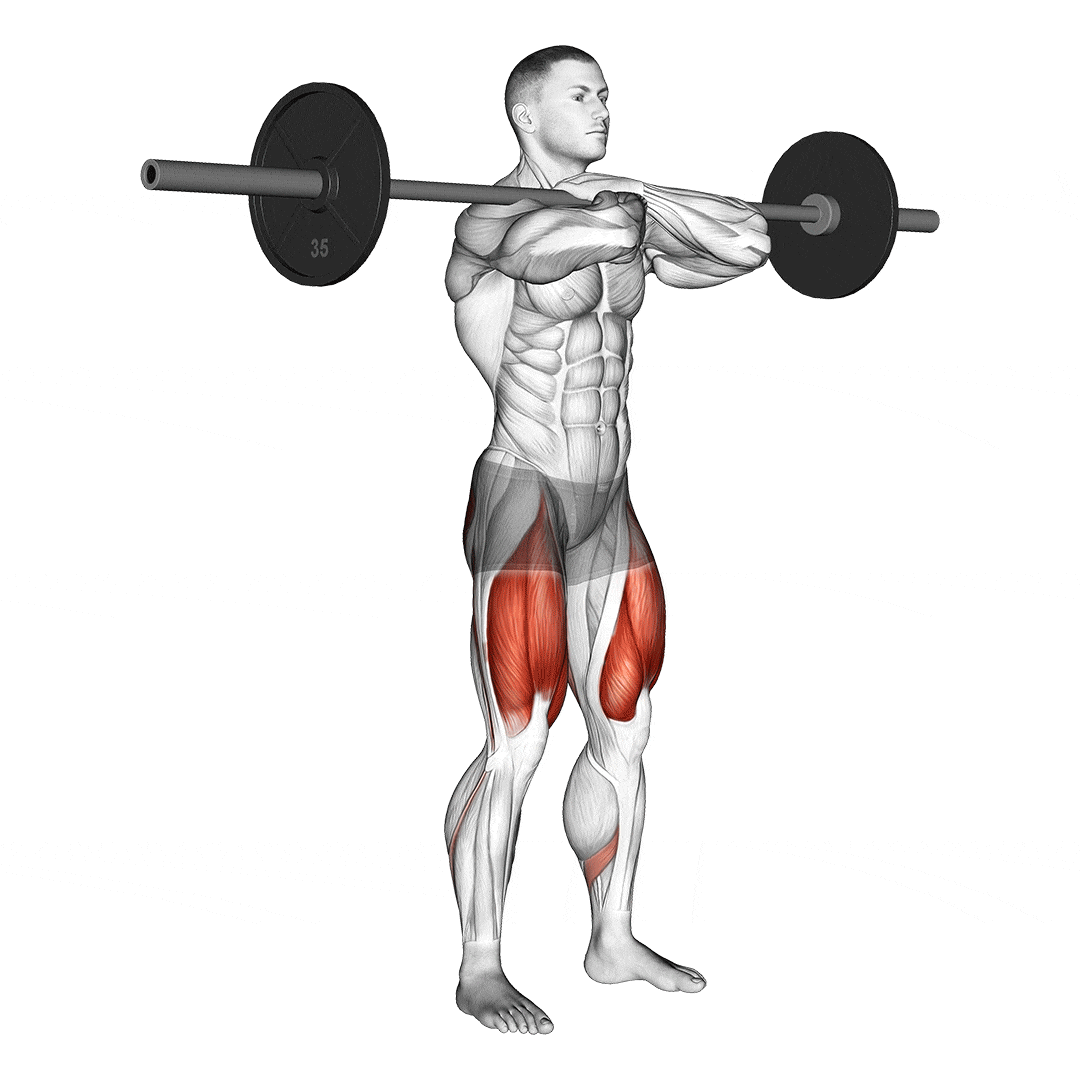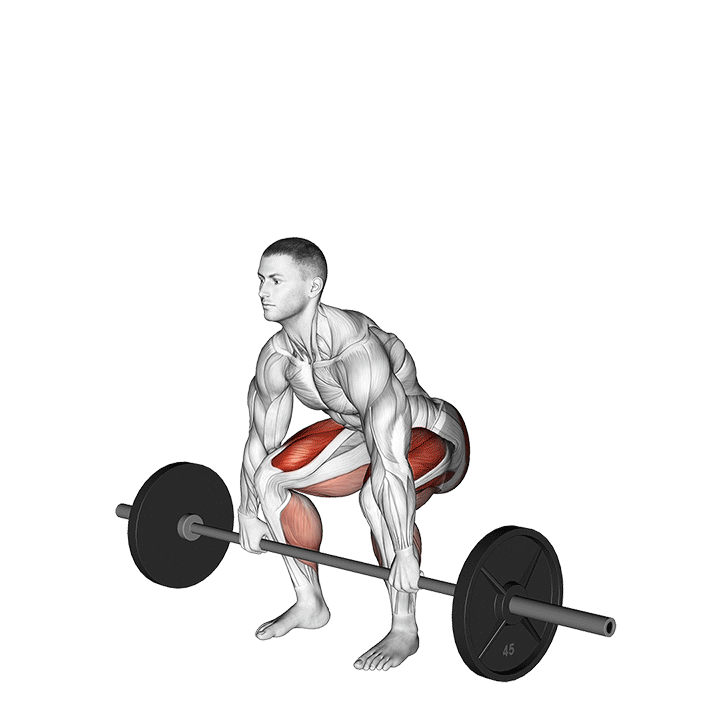When it comes to building lower body strength, squats are one of the most effective exercises. Not only do they target multiple muscle groups, but they also help improve balance, flexibility, and coordination. In this post, we'll cover six essential squat exercises that you can incorporate into your workout routine to help you build lower body strength.
1. Barbell Back Squat
The barbell back squat is one of the most popular squat variations for building lower body strength. It primarily targets the quads, hamstrings, and glutes.
Here's How to Perform the Barbell Back Squat:
- Stand with your feet shoulder-width apart and place the barbell on your upper back, resting it on your traps.
- Take a deep breath and brace your core.
- Lower yourself down by bending your knees and hips, as if you're sitting back onto a chair.
- Keep your chest up and your knees over your toes.
- Drive through your heels and push yourself back up to the starting position.
Benefits of Barbell Back Squat:
- Targets multiple muscle groups
- Increases lower body strength and power
- Improves core stability and balance
- Enhances hip mobility
Common mistakes to avoid:
- Allowing your knees to cave in
- Leaning too far forward
- Not maintaining a neutral spine
2. Front Squat
The front squat is another popular squat variation that targets the quads, hamstrings, and glutes. It also places more emphasis on the core and upper back.
Here's How to Perform the Front Squat:
- Stand with your feet shoulder-width apart and hold the barbell across your upper chest, resting it on your shoulders.
- Take a deep breath and brace your core.
- Lower yourself down by bending your knees and hips, as if you're sitting back onto a chair.
- Keep your elbows up and your chest up.
- Drive through your heels and push yourself back up to the starting position.
Benefits of Front Squat:
- Targets multiple muscle groups
- Increases lower body strength and power
- Improves core stability and balance
- Enhances upper back and shoulder mobility
Common mistakes to avoid:
- Allowing your knees to cave in
- Leaning too far forward
- Not maintaining a neutral spine
3. Overhead Squat
The overhead squat is a challenging squat variation that requires significant mobility, stability, and strength. It primarily targets the quads, hamstrings, and glutes, while also working the shoulders, upper back, and core.
Here's How to Perform the Overhead Squat:
- Hold a barbell overhead with a wide grip.
- Stand with your feet shoulder-width apart and toes pointed slightly outward.
- Take a deep breath and brace your core.
- Lower yourself down by bending your knees and hips, as if you're sitting back onto a chair.
- Keep the barbell stable overhead and your elbows locked out.
- Drive through your heels and push yourself back up to the starting position.
For a variation that combines the benefits of the snatch with the overhead squat, you could try the kettlebell complex snatch to overhead squat. This exercise requires skill and coordination, so it's important to master each movement separately before attempting the complex.
Benefits of Overhead Squat:
- Targets multiple muscle groups
- Increases lower body strength and power
- Improves shoulder and upper back mobility
- Enhances core stability and balance
Common mistakes to avoid:
- Allowing your knees to cave in
- Losing stability in the overhead position
- Not maintaining a neutral spine
4. Goblet Squat
The goblet squat is a squat variation that uses a kettlebell or dumbbell to increase resistance. It primarily targets the quads, hamstrings, and glutes, while also improving core stability and balance.
Here's How to Perform the Goblet Squat:
- Hold a kettlebell or dumbbell at chest level with both hands
- Stand with your feet shoulder-width apart and toes pointed slightly outward
- Take a deep breath and brace your core
- Lower yourself down by bending your knees and hips, as if you're sitting back onto a chair
- Keep your chest up and your elbows tucked in
- Drive through your heels and push yourself back up to the starting position
Benefits of Goblet Squat:
- Targets multiple muscle groups
- Increases lower body strength and power
- Improves grip strength
- Enhances core stability and balance
Common mistakes to avoid:
- Allowing your knees to cave in
- Leaning too far forward
- Not maintaining a neutral spine
5. Bulgarian Split Squat
The Bulgarian split squat is a unilateral squat variation that targets each leg independently. It primarily targets the quads, hamstrings, and glutes, while also improving balance and coordination.
Here's How to Perform the Bulgarian Split Squat:
- Stand facing away from a bench or elevated platform.
- Place one foot on the bench behind you and the other foot in front of you.
- Take a deep breath and brace your core.
- Lower yourself down by bending your front knee and hip, while keeping your back leg straight.
- Keep your chest up and your front knee over your toes.
- Drive through your front heel and push yourself back up to the starting position.
Benefits of Bulgarian Split Squat:
- Targets each leg independently
- Increases lower body strength and power
- Improves balance and coordination
- Enhances hip mobility
Common mistakes to avoid:
- Allowing your knee to cave in
- Leaning too far forward
- Not maintaining a neutral spine
6. Sumo Squat
The sumo squat is a squat variation that targets the inner thigh muscles, as well as the quads, hamstrings, and glutes.
Here's How to Perform the Sumo Squats:
- Stand with your feet wider than shoulder-width apart and toes pointed slightly outward.
- Hold a kettlebell or dumbbell in front of your body with both hands.
- Take a deep breath and brace your core.
- Lower yourself down by bending your knees and hips, as if you're sitting back onto a chair.
- Keep your chest up and your knees over your toes.
- Drive through your heels and push yourself back up to the starting position.
For a variation using a kettlebell, you could try the jump squat with kettlebell, which combines the benefits of a sumo squat with a plyometric jump.
Benefits of Sumo Squat:
- Targets the inner thigh muscles
- Increases lower body strength and power
- Enhances hip mobility
- Improves core stability and balance
Common mistakes to avoid:
- Allowing your knees to cave in
- Leaning too far forward
- Not maintaining a neutral spine
Incorporating these six essential squat exercises into your workout routine can help you build lower body strength and improve overall fitness. Whether you prefer barbell back squats, front squats, overhead squats, goblet squats, Bulgarian split squats, or sumo squats, there's a squat variation that can work for you. Remember to start with proper form, use appropriate resistance, and progress gradually to avoid injury and achieve the best results.










